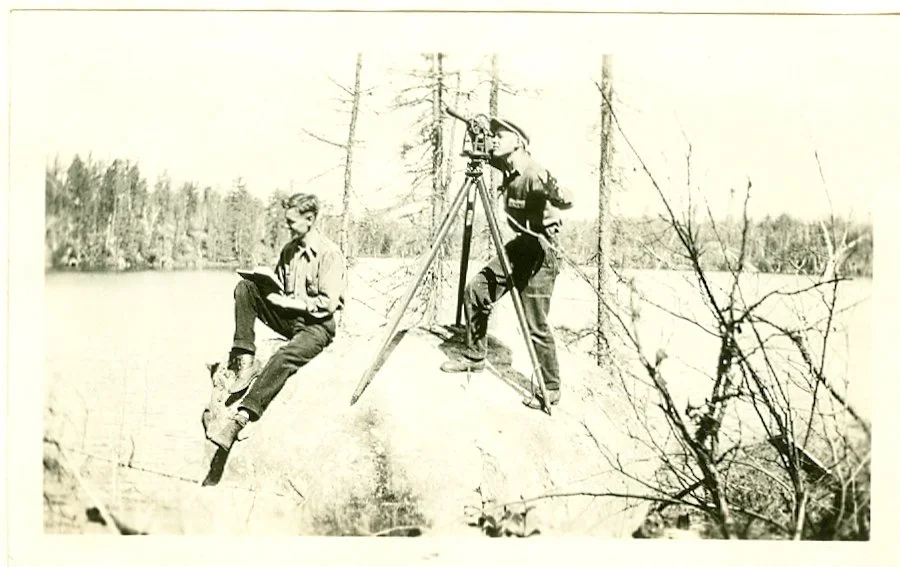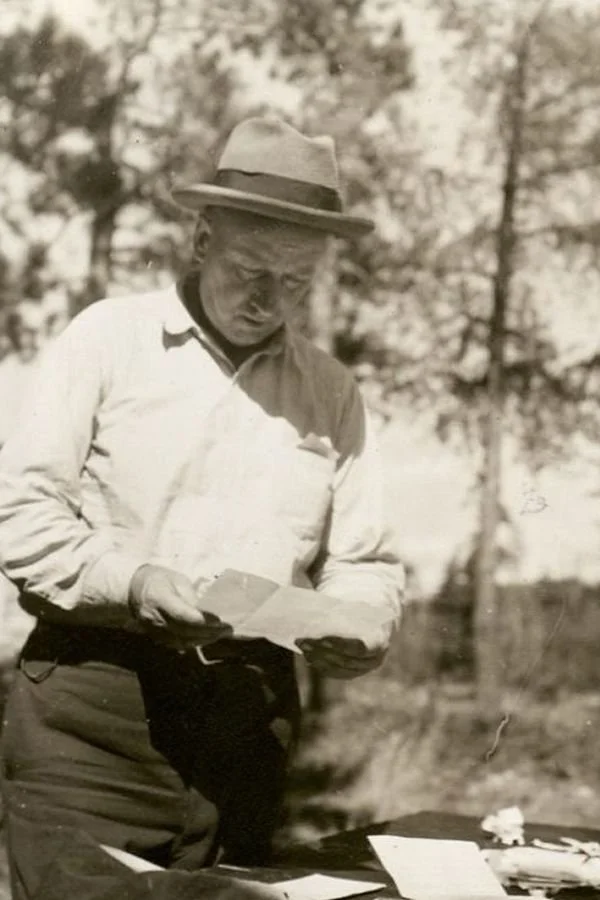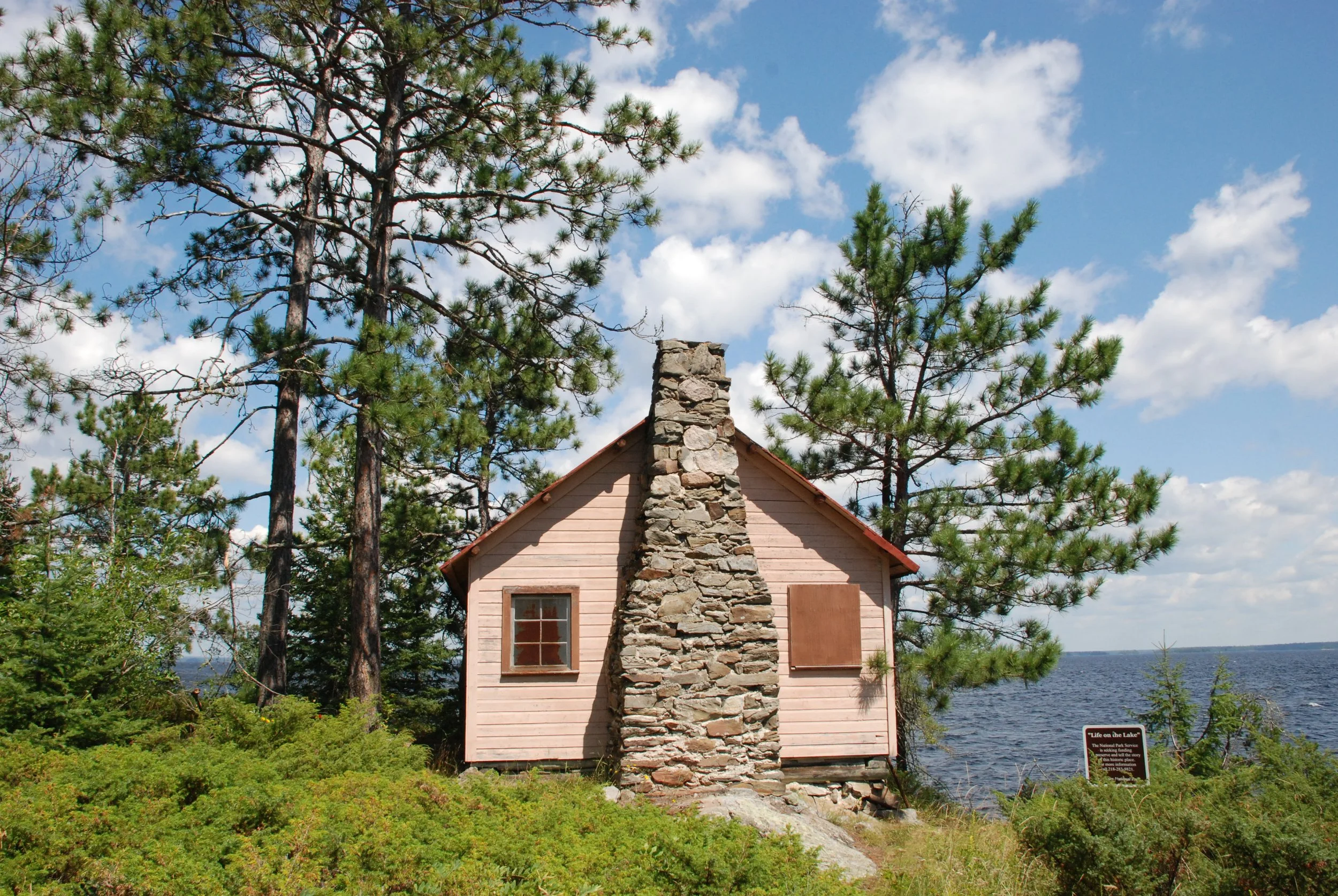Camp Marston and “The Spirit of Rainy Lake”
Written by Tim Shannon, National Park Service
Picture this: you’re a promising civil engineer student at Iowa State College in the 1920s or 30s. You are excited to spend six weeks of your summer at a surveying camp in Northern Minnesota. You’ve spent two days traveling over 500 miles by train from Ames, Iowa, stopping in St Paul, Duluth, and Virginia before continuing deep into the Northwoods by boat. Across the vastness of Rainy Lake, you pass by miles of scenic wilderness before arriving at an isolated, rocky point. Here you find a few semi-permanent buildings and the surrounding landscape covered by dense forest. You’ve just arrived at Camp Marston. But what lay ahead?
Camp Marston, 1938
Work lies ahead, and lots of it. Upon arrival, a small village would emerge as the cook shack was set up, the hospital tent and small sleeping tents were erected, firewood was prepared, and supplies were organized. Once set up, the students constructed a cabin. A new cabin was built each year, and students learned practical skills such as carpentry, masonry, painting, and wood cutting, waste disposal, pumping fresh water, and firefighting.
Camp Marston Dining Hall, 1927
After constructing the cabin, the student’s course and field work began including route surveying (for mapping potential railroad lines and highways), triangulation, plane table mapping, land surveying, and hydrographic surveying (the irregular shoreline and dipping lake bottom was ideal for contour mapping). The students were able to experiment with new instruments and even pioneered new surveying techniques.
Topography Party, 1924
Workdays were long, often lasting twelve hours or more, six days a week. Students worked through harsh conditions including cold rain, blazing sun, mosquitos, black flies, forest fires, thunderstorms, and wildlife encounters. A former student recalled an incident where a classmate ended up with multiple porcupine quills in his hand after trying to handle the animal. After grueling days in the wilderness, the students labored into the evening completing complex calculations, drawing maps, and writing reports. But time spent at Camp Marston wasn’t ‘all work, no play’.
Topographical Work, 1924
Students depended on recreation in their free time. Horseshoes, swimming, canoeing, boating, exploring, prospecting, photography, reading, letter writing, picking blueberries, and relaxation were all undertaken. Students were encouraged to fish if they could afford the $3 Minnesota fishing license. Wednesday and Sunday evenings were set aside for fellowship and ‘musical expression’ around a campfire. Boat trips were scheduled to local landmarks like Kettle Falls and Manitou Rocks in Canada. The students even formed a baseball team and would play against other teams in local events.
Camp Marston, 1937
The summer surveying camp was a required course for all sophomore engineering students at Iowa State College. The skills learned at Camp Marston served as practical field training and application. A former student remarked that “the field work was meant to resemble an actual surveying job, and camp was operated like an actual surveying camp.” But you may ask yourself: why was Rainy Lake the chosen location?
John S. “Jack” Dodds
That is due in large part to John S. “Jack” Dodds, a civil engineering professor at Iowa State. Initially, many options had been proposed for an ISC surveying camp location. Professor Dodds did not believe these suggested areas were remote enough, and the lack of isolation would potentially cause distractions for his students. Dodds scouted northern Minnesota and fell in love with the Rainy Lake area. The rugged environment found in this region, which included the thick forest and rocky terrain along Rainy Lake, would offer a technical challenge for the students and mirror the rough topography they would experience in their profession. Dodds wrote in the 1923 Summer Surveying Camp report: “the almost complete isolation of the camp was one of its greatest advantages… Each man in camp learned how to maintain an engineering organization on the frontier, keeping up the morale, devising entertainments, learning to rely upon limited resources and appreciating the value of work.”
Students at Camp Marston, 1927
Dodds ran the surveying program at Camp Marston from 1923 to 1939, with an average of 35 students attending each summer. Against Dodd’s wishes, the summer surveying camp was moved away from Rainy Lake in 1939 to an abandoned CCC camp in Wirt, Minnesota. The reason for the move came from the college’s Dean of Engineering, who had visited Camp Marston in 1938. He concluded it “was too remote, too archaic, and lacking the amenities a camp ought to have.” The qualities that originally drew Professor Dodds to the area were ultimately its undoing. However, Camp Marston’s legacy still lives on within Voyageurs National Park.
Polaris Cabin, 2010
Today, Camp Marston is a designated Visitor Destination Site within Voyageurs National Park. The site is accessible by boat and is located in Browns Bay, roughly 24 miles from the Rainy Lake Visitor Center. The site provides an opportunity for visitors to explore and learn about the historical significance of the ISC summer surveying camp. Plans are underway to restore the site. This includes historical rehabilitation of the existing building, creating a small trail system, and installing waysides that convey its story. Only one of the original structures remains intact – the Polaris Cabin, which served as the faculty living quarters – but rock chimneys and foundations reveal the positions where previous structures once stood. These vestiges endure as reminders of the “the Spirit of Rainy Lake”, camp comradery, and sense of purpose that Professor Dodds believed Camp Marston fostered within his students.








